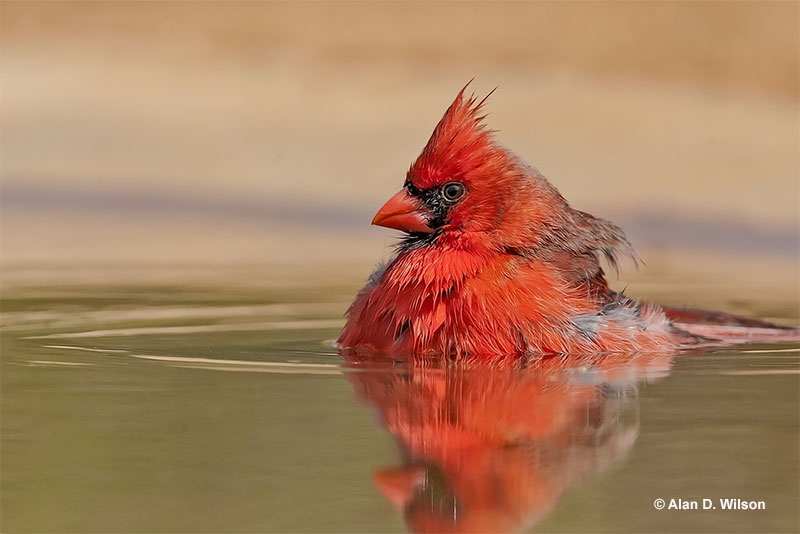
Kentucky is a scenic state of rolling hills, fresh green grass, and abundant natural beauty. The 40,408 square kilometers of woodlands, wetlands, and meadows are home to 4.5 million people and nearly 400 species of birds!
Kentucky state bird – the Northern Cardinal, is one of the prettiest birds of the state. Northern Cardinals are so common in Kentucky that you can’t go far without seeing their bright red colors or hearing their cheerful whistled songs.
On this page
Are Kentucky Cardinal and Northern Cardinal The Same?
Sometimes, we hear about the Kentucky Cardinal and wonder if that’s the same bird as the Northern Cardinal. Although Northern Cardinals are also commonly known as “Redbirds,” and this species is the state bird for Kentucky, it turns out that the Kentucky Cardinal isn’t even a bird!
When people talk about the “Kentucky Cardinal”, they are usually referring to a nightly train service that began in 1999, and connected Chicago, Illinois to Louisville, Kentucky.
Despite its fun name, the Kentucky Cardinal ended up running slower than expected and ended in 2003. The fact that a train service was named after the cardinal isn’t surprising. Baseball teams and several other things are also named after this popular, beautiful bird.
State Bird of Kentucky
The Northern Cardinal became the official state bird of Kentucky on February 26, 1926. Kentucky was the very first state to pick an official state bird, and the state assembly didn’t hesitate to choose the Northern Cardinal.
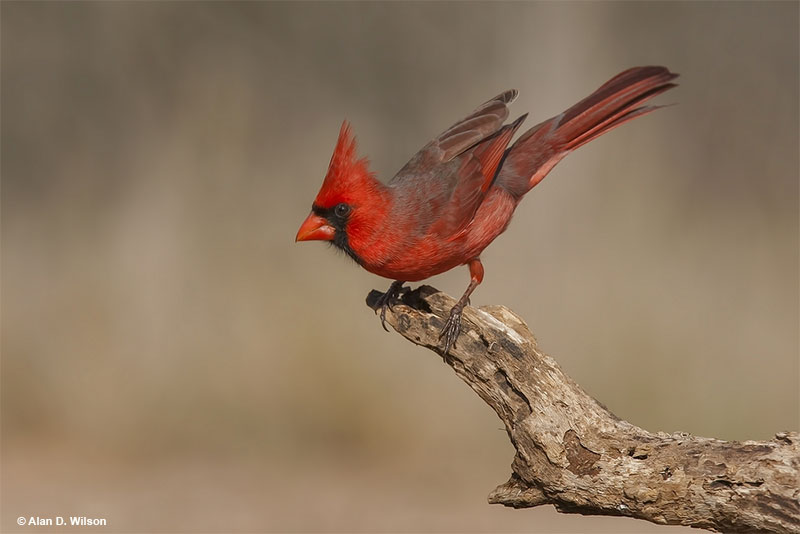
They chose this species for two main reasons. Northern Cardinals are striking, beautiful birds, and, in Kentucky, they are wonderfully common. Even people who don’t like birds still know what a cardinal is and probably appreciate it (even if they don’t want to admit it)!
It’s hard not to be impressed by a fantastic red bird with neat black highlights and a crest, especially when the bird lives in your backyard.
That’s right, in Kentucky and many other places, Northern Cardinals frequent backyards, visit feeders, and live in parks and lots of other places.
These attributes and their fun, cheerful songs have made this species a familiar and much-appreciated songbird in Kentucky for centuries.
Spurred on by the Federation of Women’s Clubs to pick a state bird, the state assembly was happy to vote for the Northern Cardinal. In fact, lawmakers in Kentucky were so sure this was the right choice, they made sure to codify the Northern Cardinal as the state bird in 1942.
Fun Facts about Northern Cardinals
- This species gets its name from the “Cardinals” of the Catholic church. Like those high ranking clergy characterized by their crimson robes, Northern Cardinals are mostly plumaged in bright red colors.
- Although lots of other songbirds migrate south for the winter, Northern Cardinals stay put and survive cold weather by feeding on seeds.
- Some male Northern Cardinals are yellow! Once in a while, a male Northern Cardinal has a genetic mutation called, “xanthochroism” where his red plumage is yellow. These “Yellow Cardinals” are often featured on the local news.
- Male cardinals aren’t the only ones who sing. Female Northern Cardinals also sing a quiet song to communicate with their mate while they incubate their eggs.
- The Northern Cardinal was chosen as the official bird by 7 different states! Unsurprisingly, it is very common in all of those states.
- Historically, despite its name, the Northern Cardinal was more a bird of southern states. It was only during the 20th century that this species expanded north to some northern states and Quebec.
Identification
The Northern Cardinal is a small to medium-sized songbird with a perky crest and a strong, conical beak. On average, these birds are eight to nine inches in length, have a wingspan of about a foot, and weigh 1.6 ounces.
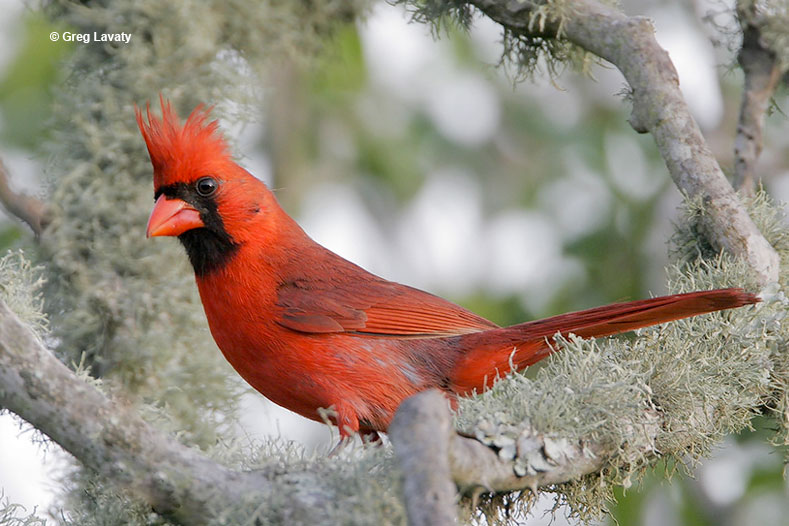
Male Northern Cardinals are bright red birds with contrasting black faces and throats. With a close look, we can also see that they are duskier red on their back, wings, and tail.
Female Northern Cardinals are shaped like males and are the same size, but they are much plainer birds. They are still beautiful (!), but they lack the bright colors shown by the male. Instead, they have soft brown, gray-brown, and tan plumage with bits of red in their crest, wings, and tail.
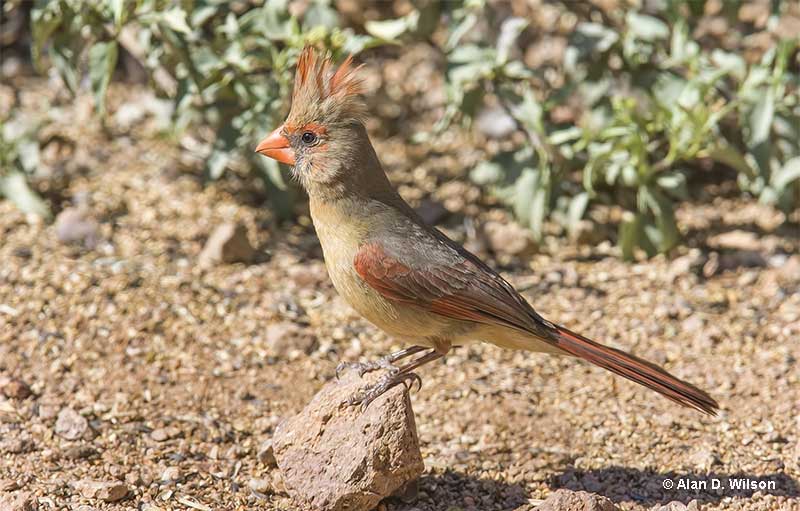
Both sexes of the Northern Cardinal have an orange or red beak and a long, rounded tail.
Young birds resemble female Northern Cardinals, but they are even duller. These first-year birds are dull, grayish-brown and usually have a smaller crest and a shorter, dark beak. However, we can still recognize them as Northern Cardinals by their general shape, which includes a crest and a strong, conical beak.
When they fly, Northern Cardinals have a brief undulating flight with short, rounded wings.
What do Northern Cardinals eat?
Northern Cardinals eat lots of insects and seeds. They feed on beetles, grasshoppers, caterpillars, and just about any other insect they can catch. These beautiful birds mostly forage for insects during warm weather by looking for them on the ground, and in the foliage of low, dense vegetation.
They catch bugs and other small creatures by using their beak to pick them from leaves, the ground, twigs, and bark.
In winter, Northern Cardinals mostly feed on seeds that they pick up from the ground. They often forage under and next to tangled vegetation and love to visit feeders to eat sunflowers seeds and other types of bird seed.
Unlike some other birds, when Northern Cardinals go to a bird feeder, they usually pay a brief visit early in the morning, and then another visit in the afternoon.
Call
Northern Cardinals often make a loud, sharp, smacking chip call. Both sexes also make several other brief calls and chattering sounds, but the Northern Cardinal is best known for its whistled song.
From early spring to summer, male Northern Cardinals sing from the tops of bushes, trees, and even rooftops. They sing variations of loud whistles that can sound like, what cheer…what cheer…what cheer chewchewchewchewchew.
Behavior
Northern Cardinals usually occur in pairs that spend a lot of their time foraging on or near the ground. These pretty birds tend to be obvious but can also reveal their presence with their loud chip calls.
We can also see them perching in bushes, especially in second-growth, big gardens, and in park-like habitats.
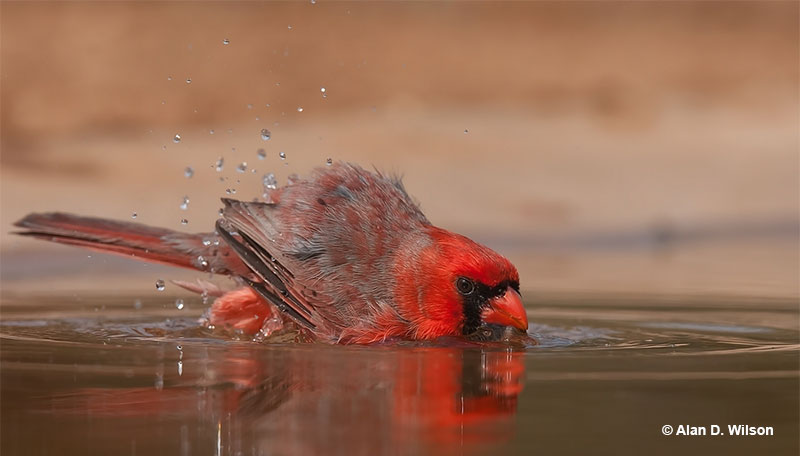
They build hidden cup nests in bushes and short trees and are permanent residents in southeastern Canada, most of the eastern USA, Texas, and southern New Mexico, and parts of Arizona. Northern Cardinals also live in many parts of Mexico and can even occur in northern Belize.
Northern Cardinals can be very aggressive with each other, but they don’t pose any threats to people or their pets. However, they need to watch out for domestic cats, Sharp-chinned and Cooper’s Hawks, snakes, and other predators that prey on small birds.
Frequently Asked Questions
When was the Kentucky state bird?
The Northern Cardinal became the Kentucky state bird on February 26, 1926.
What does Kentucky state bird look like?
The Kentucky state bird looks like a beautiful red bird with a crest and black on its face. Female Northern Cardinals are plainer, brown, crested birds with some red on their crest, wings, and tail.
What is Kentucky’s state bird’s history?
Historically, the state bird of Kentucky was chosen to be the state bird by the state assembly in 1926. They picked the Northern Cardinal because it is a common, beautiful garden bird throughout the state of Kentucky.
See more – Common birds of Kentucky | Hawks in Kentucky

